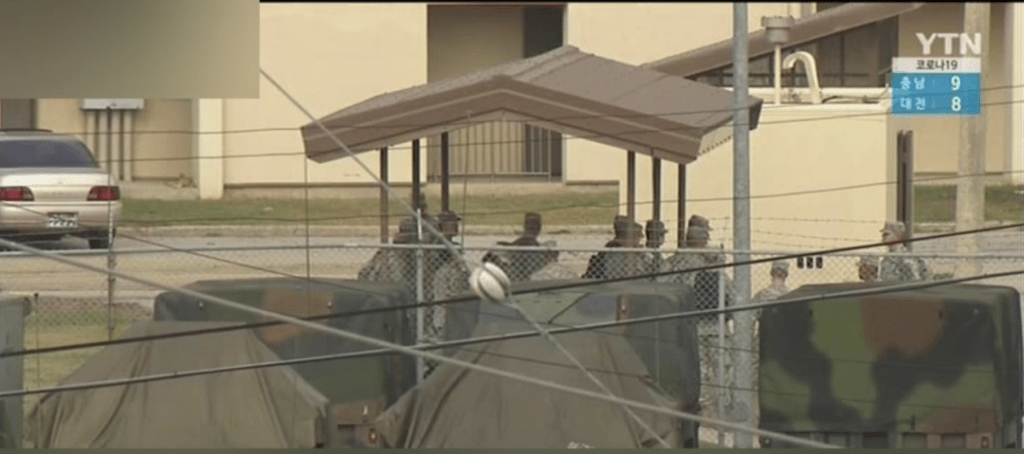U.S. troops stationed in South Korea will return 12 military bases to South Korea, Among them, 11 pollutants exceeded the standard, Also exposed to store biochemical substances, The base returned by the US military to Japan, The same “legacy is not shallow”, U.S. military “legacy” everywhere in the Asia-Pacific region, Frequent pollution incidents, South Korea reclaims U.S. military bases with serious pollution
Also exposed to store biochemical substances
South Korean officials said on the 11th that South Korea and the United States reached an agreement on the return of 12 military bases to the South by the US troops stationed in South Korea, six of which are located in the capital Seoul.
So far, only 12 of the 80 US military bases in South Korea remain to be recovered by South Korea.

The area of the US military base recovered by South Korea this time is 1.465 million square meters, equivalent to more than half of Yeouido, South Korea. This land will be used for the construction of parks and public rental housing projects.
However, the two sides did not negotiate the cleaning and treatment costs after the recovery of the base. South Korea’s Ministry of National Defense said that 11 of the 12 newly recovered bases had excessive heavy metals and petroleum pollutants .
South Korean media quoted a report from an environmental organization that it would take about two years to solve the environmental pollution problems of these 12 bases, and cost up to 1 trillion won (about $1 billion). The cost of cleaning up the three US military bases recovered last year was as high as 98 billion won (US$90 million).
The South Korean side has always asked the US to share part of the clean-up costs, but the US insists that it only pays when the pollution constitutes a “substantial and imminent” health risk .
However, in fact, the US military in South Korea is not only polluted by heavy metals such as oil, it has even been exposed to store biochemical substances . The Korean Disease Management Department disclosed that in January 2019, the US military sent three types of bacteria including Staphylococcus toxoid to the US military bases in Busan, Gunsan, and Osan. But the U.S. military argued that these are inactive bacteria that eliminate toxic and are not dangerous.
South Korean public opinion has always suspected that the U.S. military used deadly harmful bacteria for biochemical tests at U.S. military bases in South Korea. Although the U.S. emphasized that it had destroyed all specimens, the South Korean people were still uneasy. They had held many protests and demanded that the U.S. quickly withdraw the laboratory.
US troops stationed in Japan returned to Japanese bases
Abandoned bombs and oil tanks still exist
The bases returned by the US military in Japan to Japan are also “poisonous.”
As early as 2016, the US military stationed in Japan in Okinawa returned part of the training ground to the local government. At that time, the Japanese government promised to establish a national park here and “apply for heritage.”
However, after many years, not only the park was not built, but unused or abandoned flares, bombs, oil tanks, etc. were often found , and toxic substances were detected.
The Japanese government has never given a clear explanation on how much US military waste remains in this area. According to the “Japan-US Status Agreement,” the US military does not need to restore the original state of the return area, nor does it need to pay related expenses.
U.S. military for decades
Severe pollution of Pacific islands
Anyone who pollutes the land of other countries can pat their buttocks and leave, not to mention the ocean shared by mankind.
According to the British “Guardian”, British journalist Jon Mitchell disclosed in his new book “Poisoning the Pacific” that the US military has caused serious pollution on the Pacific islands under its control for decades. The sources of pollution include radioactive waste, nerve agents and ” “Agent Orange” and other chemical weapons.
Statistics show that between 1946 and 1958, the United States conducted a total of 67 nuclear tests in the Marshall Islands . Among them, the weapon test that caused the most damage to the northern Marshall Islands was called the “champion castle”, and its power was equivalent to Hiroshima or Nagasaki. 1,000 times the atomic bomb .
In the 1970s and 1980s, the United States sent soldiers to clean up the nuclear test site in Eniwetok Atoll, dumping the contaminated soil and other radioactive waste into a deep pit caused by a nuclear explosion, and then using concrete seal.
But recently, cracks and gaps have appeared in the dome. As the climate warms and the sea level rises, the dome building is in danger of leakage. Officials in the Marshall Islands sought help from the US government, but were refused.



